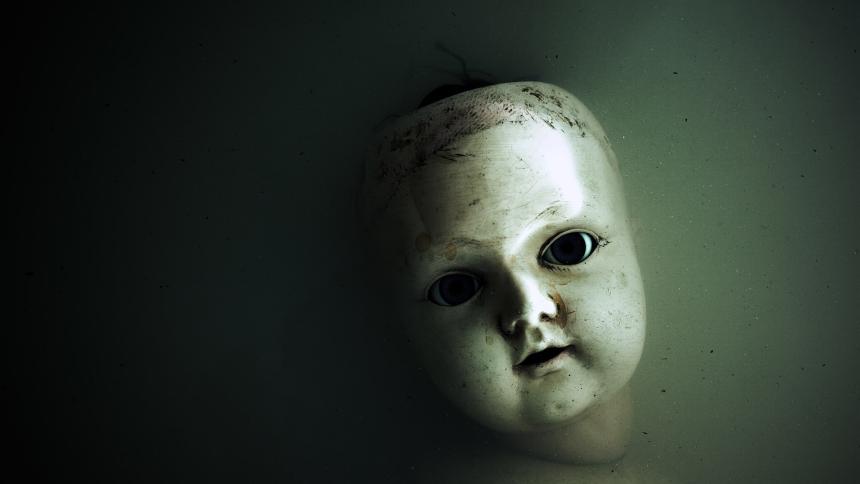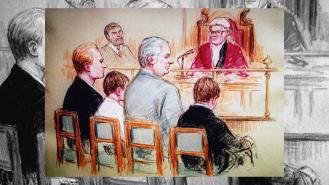
Britain’s Worst Child Criminals
Kids Behind Bars: Life or Parole is a grimly fascinating run of documentaries tells eight different tales of children that have been sentenced to mandatory life sentences in jail - without a chance of parole - but who are now seeking re-sentencing.
Their crimes are often shocking in their violence and brutality. Criminality, after all, isn’t something we naturally associated with children. Kids Behind Bars explores the crimes, backgrounds, sentences, jail terms and rehabilitation of these young people and asks one important central question: Should life really mean life for offenders that commit their crimes as children?
As the eight convicted child offenders that we'll meet in the coming weeks await their fate in the United States, let's see what we can learn from five famous cases of kids behind British bars..
Aaron Campbell
Crime: The abduction, rape and murder of six-year-old Alesha MacPhail.
Age at the time of the crime: 16.
Sentence: 27 years in prison.
In the wee small hours of the 2nd of July 2018, Alesha MacPhail was snatched from the bed she slept in at her grandparents’ house in Rothesay on the Isle of Bute, Scotland. Her body was found later that day, just a mile away. Not only had the six-year-old girl been raped and murdered, she had received some 177 severe injuries. The pathologist described the injuries as ‘catastrophic’ and confirmed that they were all inflicted while Alesha was alive.
Murder trials don't come a lot more cut and dry than Aaron Campbell’s. His lasted a mere fortnight, with the jury taking just three hours to return its unanimous verdict. Judge Lord Matthews told Campbell that he had 'stolen Alesha's life' by 'committing some of the most wicked and evil crimes this court has ever heard of in decades of dealing with depravity'.Campbell was sentenced to life imprisonment, with a minimum term to be served of 27 years. It was the longest term set in Britain for anyone under the age of 21 in well over a decade.
As of May 2019, Campbell has been allowed to appeal his sentence. His is expected to do so in August.
‘The Snapchat Killers’
Crime: The Murder of Angela Wrightson.
Ages at the time of the crime: 13 and 14.
Sentence: A minimum of 15 years' imprisonment.
Hartlepool resident Angela Wrightson was a chronic alcoholic who lived on her own. As such, she was vulnerable. Barely, teenagers, two girls befriended Angela and would regularly coerce her into buying them cigarettes and alcohol. In December 2014, she was found dead by her landlord. She had, it soon transpired, been killed by her new teenage 'friends'. In the lead-up to the crime, the girls had posted images of themselves and Ms. Wrightson together on the social networking app Snapchat.
Angela, it transpired, suffered over 100 acute injuries, having been beaten to death with a coffee table, a shovel, a television and a large stick with screws in it. Ash from burnt paper was found in her ears and multiple shards of glass and gravel were found around her naked lower body. The crime was undeniably vicious.
The girls were both 15 when they were finally sentenced, with both receiving a minimum of 15 years in prison. Due to their age at the time of the crime (and reports of self-harm and suicidal inclinations), both girls received full anonymity.
Mr. Justice Globe said: ‘This type of offence is extremely rare and it is arguable that no further deterrence is necessary or, if it is, the naming of the individuals will add little to the fact that those responsible have been brought to justice, been convicted and been sentenced.’
Anonymity may not be a hugely popular concept to victims’ families and society in general, but from a rehabilitation perspective? It may well be the only chance these two young women have at ever being able to turn their lives around.
Mary Bell
Crime: The manslaughter of two toddlers (on grounds of diminished responsibility).
Age at the time of the crime: 10.
Sentence: An ‘indefinite term’ which turned out to be 12 years.
When you hear the nickname ‘The Tyneside Strangler’, you probably think of a tall, strong Geordie fella who asphyxiates women down alleyways, don’t you? What you’re unlikely to imagine is a primary school age girl. In this case, though - you should.
Mary Bell was abused growing up. Her mother was a sex worker and her childhood was extremely hard. But on the 25th of May 1968, the day before her 11th birthday, little Mary made the sudden transition from ‘poor little kid’ to ‘hated child murderer’.
The young girl strangled four year-old Martin Brown in a derelict house. Nine weeks later, with the help of her friend Norma Joyce Bell (no relation), she killed three year-old Brian Howe in a similar way. Days after the second murder, Mary returned to the site of the killing and carved her initials into the boy's stomach and - using scissors - cut off some of his hair, scratched his legs and mutilated his genitals.
Norma was acquitted but Mary was convicted of 'manslaughter on the grounds of diminished responsibility' and sentenced to an ‘indefinite term’ in a young offenders institution and then an open prison. She would eventually serve 12 years behind bars, before being released under a new name.
Mary has never since reoffended and had a child of her own in 1984.
John Venables & Robert Thompson
Crime: The abduction and murder of two year-old James Bulger.
Ages at the time of the crime: Both 10.
Sentence: Imprisonment in a youth offenders institution until they were 18 and then a release on a lifelong licence with new identities.
No discussion of British child criminality is complete without a mention of the notorious and truly horrific Jamie Bulger case. The kidnapping, torture and murder of two-year-old Bulger by two ten-year-old children in Bootle, Merseyside, on February the 13th 1993 was headline news across the world. Few could believe such brutality was possible from two such young kids.
The case is now more famous for the debate it sparked surrounding young offenders and how they should be dealt with. A fierce argument broke out at the time of sentencing and was reignited eight years later when both of Bulger’s killers, Robert Thompson and Jon Venables, were released on lifelong licences, under assumed names.
The fates of Thompson and Venables are poles apart and don’t help settle any argument over how ‘killer kids’ should be handled. Robert Thompson has not reoffended and lives anonymously (presumably not involved in crime). Jon Venables, however, has reoffended. Several times. In 2010, he was jailed for breaching the terms of his licence and released on parole in 2013. Four years after that he was sent to prison for possession of child abuse images.
‘The Edlington Devils’
They’ve never been publicly named because of their age at the time of their savage crime. Locals in Edlington in South Yorkshire have a name for them, though... ‘The Devils’. Aged just 10 and 11, the brothers had a reputation in the area for anti-social behaviour. On Saturday the 4th April 2009, the boys took their bad behaviour a step further. They lured two similarly-aged boys to a piece of wasteland and committed a series of acts of quite unbelievable cruelty on them. Beaten, burned, stabbed, sexually abused and strangled, it was a small wonder the children survived. ‘The Devils’ filmed part of the attack, with the footage being used as evidence to convict them in court.
When asked why they did what they did, one of the boys chillingly replied: ‘Cos there were nowt else to do.’
The boys were both given sentences of ‘indeterminate length’ and ordered to serve a minimum of five years each in a youth offenders institution. Their appeal failed, but they were granted lifelong anonymity for their own safety. Both boys were released in 2016 after a high Court judge was satisfied that they are ‘equally committed to rehabilitation’. As we can see, there’s no hard and fast rule for ‘criminal kids’. Each case absolutely has to be taken on its various specifics and merits and it can only be left for the legal and penal systems to decide what happens.There’s absolutely no doubt that these young people caused chaos, trauma and utter devastation with their crimes. Yet can we really be satisfied knowing that offenders that committed their crimes at such an early age might be locked up indefinitely? To the families of their victims - the answer is almost certainly ‘yes’. To the rest of us, however? Surely punishment has to be finite and rehabilitation possible... Surely.







